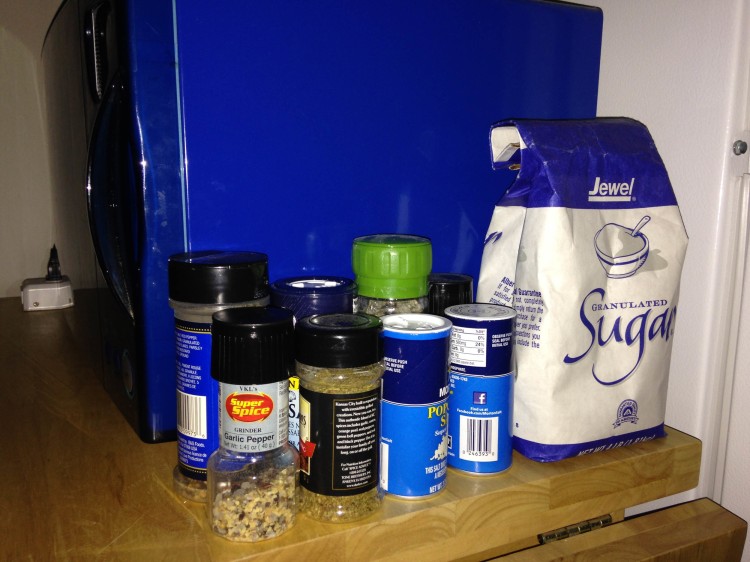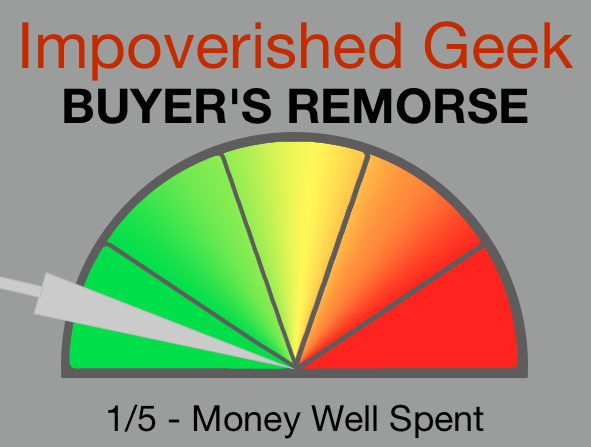I’ve been using smartphones for a long time. Several years before the iPhone was announced, the likes of Blackberry, PalmOS, and Symbian vied for a much smaller market. Apple and Google have driven the concept forward tremendously for nearly a decade now, locking customers into a two-year upgrade cycle that keeps technophiles enrapt and swells the coffers of wireless service providers.
The two biggest names in smartphones are Apple and Samsung, but companies like HTC, LG, Motorola, Nokia, and Sony are all trying to create the perfect device — or, at the very least, a device that’s a step ahead of their competition. With the market having matured, gimmicks like being waterproof or having self-healing materials are thrown into the mix to better differentiate devices. Apple trumpets design, and Samsung packs every possible feature they can into their Galaxy line of phones.
OnePlus, an offshoot of Chinese company Oppo, wants to break free of that mold. Their first phone, simply called “One,” matches 2014’s flagship phones in every appreciable way, dropping gimmicks in order to refine what a user’s base expectation of a smartphone should be. It has the same processor as the Samsung Galaxy S5, HTC One (M8), and LG’s G3. It has a screen as big as or bigger than the competition, with a resolution that is eclipsed only by the G3. It meets or exceeds the competition in regards to RAM and storage.
The big difference? It costs half as much as anything else on the market.
Buying a flagship phone on-contract typically costs around $199. Take that contract away, however, and you’ll find yourself paying over $600 for a base model. Add more storage to that device, if you can, and watch the price skyrocket. The OnePlus One is only sold unlocked, and offers two options: the standard 16 GB of storage for $299, and 64 GB of storage for $349. Again, that’s off-contract, with no carrier subsidy.
What does that mean? First and foremost, it means you have the right to jump between carriers as much as you want, so long as their network is compatible with the phone. In the US, that means you can choose between AT&T and T-Mobile. If you find that one carrier’s service is better than another, or if you see a better deal with the competition, just get a SIM from your carrier of choice and pop it into the phone. If you change your mind, you can contact your old carrier to restart service. You’ll never see an Early Termination Fee.
All this excitement is moot if the phone doesn’t live up to the hype, though. The general consensus among the geek elite is that the OnePlus lives up to its promises, but I had to know for myself. Getting the OnePlus One isn’t easy. Supplies for the device are incredibly constrained, so OnePlus has taken to using an invite system to sell the phone. You could buy one on eBay or Amazon for an inflated price, but if you want to take advantage of one of the One’s best features — it’s unbelievably low price — you’ll have to wait and hope.
OnePlus has presented a number of promotions to sell the phone as well, but after entering a few of them their novelty wore thin. They all involve using social media to push the device, and I don’t like the idea of marketing a product I’ve never used to my friends. Fortune smiled upon me, however. Two months after adding my name to a waiting list, my opportunity arrived. I jumped on it, and less than a week later a 64 GB OnePlus One arrived in the mail.
Fit and Finish
The first concern one might have with the OnePlus One is that its low cost will lead to poor production quality. I am happy to report that this is not the case. The OnePlus One feels solid and well-built. In fact, while it’s not as nice as an iPhone, it is considerably nicer than the Galaxy S3 and S4 that I have used at work. Of particular interest is the back of the phone. It has a slightly rubbery, gritty finish that OnePlus refers to as “sandstone.” It’s an interesting design choice that makes it feel like the phone will adhere better to a loose grip, whereas most phones feel like they’ll immediately slip. It’s an interesting texture that you don’t often find on electronics. I like it, but if you put the One in a case, the unique texture is replaced by whatever is on the back of your new enclosure.
Display
The majority of the OnePlus One’s face is its giant 5.5” screen. Clocking in at an ultra-sharp 401 pixels per inch, the 1920×1080 array is clear and radiant. Although it does not get as bright as other flagships, it went toe-to-toe with the iPhone 5 and 5S I have on hand. It did not fare as well as Apple’s products in direct sunlight, but I was still able use it with little effort.
Some feel that the screen on the OnePlus One is too yellow. Although I agree that it does appear warmer than some other displays, I didn’t find it to be any more yellow than the screen on my iPhones. Whether this was a design choice (warmer displays are often used by professionals for proper color temperature) or an attempt to correct for display deficiencies (some users allege there is a yellow cast to part of the screen, regardless of temperature), I am unable to say. I think the display looked great.
Just beneath the display is a row of capacitive buttons. The light beneath them is very dim; so much so that you can’t see them outdoors. If you prefer, you can disable them and use on-screen buttons instead. I stuck with the capacitive buttons to maximize screen real estate, but it’s nice to have the option.
Performance
Featuring a Snapdragon 801 processor and Adreno 330 graphics, the OnePlus One is just shy of being bleeding edge from a technical standpoint. Brand-new phones like the Galaxy Note 4 and iPhone 6 edge it out of the top spot, but it’s more than likely you won’t notice the difference. Unlike the iPhone, the One also has a generous 3 GB of RAM. This allows for better multitasking, meaning you won’t have to constantly reload web pages and apps when you switch between them. In theory it should also allow for more complex software and games, but since mobile software is written to work on many devices, you’re more likely to see smoother animation and quicker transitions between apps than anything else.
Overall, there’s no real cause for concern in terms of performance. The next generation of Android, currently known as “Android L” will work well on the OnePlus One, as will pretty much any app you download. The One should perform admirably well into its second year, but the exponential growth of mobile processor power likely means that any phone you buy right now will be eclipsed by the competition past that point.
Battery Life
A 3,100 mAh battery feeds the OnePlus One and its massive screen, and it handles the task admirably. Like any phone, the length of time you spend between charges will vary depending on how much you use the device. If you spend ten hours watching video and posting online, you’ll drain the battery in less than a day. If you use the phone sporadically throughout the day like a normal person, it will easily run from morning until night. Nine hours of semi-frequent use during my work day leaves me with around 70% remaining battery life. When I plug my phone in at the end of the day, I typically have something in the area of 50% remaining.
The giant battery in the OnePlus One has a downside, though: it takes longer to recharge. While my old iPhone 5 would typically regain twenty to thirty percent of its capacity during my hour-long drive home from work, the OnePlus One gets back perhaps 10 percent. What’s more, the iPhone pulled that back over my car’s standard USB port, which supplies 500 milliamperes. The OnePlus One is using a higher-amperage DC adapter that is rated at 2.1 amps. When using GPS, that 2.1 amp charger could do nothing more than maintain the battery at its current charge. Trying to use GPS with the standard USB port reduced battery drain, but did not eliminate it.
If you’re in the habit of charging your phone each night, this won’t be a big deal. If you charge at random intervals during the day, however, expect to either wait longer or juice up more frequently.
Camera
I took an iPhone 5 and a OnePlus One to a local nature center to take some test shots. The One was able to hold its own for the most part. There are a few shots where I think the iPhone edged it out, but the One took a surprisingly good macro shot toward the end of my walk — one that the iPhone didn’t capture anywhere near as well. Overall I’d say they go toe-to-toe, which is really a compliment for the OnePlus. There are more expensive phones that can’t make that claim.
Things are a bit more dicey when it comes to video. Although standard video looks fine, the high frame rate (slow motion) capture was less-than compelling. I’ve included a gallery of OnePlus One versus iPhone 5 shots to make my point. The photos are entirely unretouched.


















Call Quality
I know it’s hard to believe, but some people do still use their smartphones as phones. The OnePlus One features not one but two noise canceling microphones, which should make for remarkably clear communication. In practice, the people I test-called were neither impressed nor frustrated by the quality of my voice. My only complaint is that the significantly larger phone required a short period of adjustment before I could find optimal positioning of the earpiece.
Multimedia
Generally speaking, audio and video applications on Android are a mixed bag. Nothing goes toe-to-toe with iOS when it comes to easily syncing the audio library on your computer, and iOS apps tend to play better with each other when it comes to interoperability. Those aren’t really issues caused by anything OnePlus has done, however, so I don’t blame them when I try to pause a podcast on my bluetooth speakers and a playlist in Google Music start running instead. It’s a failing of Android that has been around for some time.
From a performance standpoint, the OnePlus One plays video and audio like a champ. This sort of thing is to be expected from any modern device. The only thing I can find fault with is the “dual speakers.” The OnePlus One has two speakers on the bottom of the phone, near the microphone and micro USB port. Normally, I’d note that this is not ideal placement for stereo speakers. Instead, I have to point out that the phone features a pair of mono speakers, which really doesn’t make any sense to me. Without placing one speaker at each end of the phone, though, you’d never notice if there was stereo separation anyway.
If you plug in headphones or pair a stereo bluetooth device, you’ll get proper stereo audio. It’s probably best not to dwell on the odd choice of dual-mono speakers and just accept the quirk.
CyanogenMod
After its unbelievable price, the most compelling feature of the OnePlus One is its use of CyanogenMod, a community-built version of Android. Every Android phone has slight variances, with each manufacturer taking its own spin on the operating system. Although this serves to differentiate between devices, it almost always leads to bloated, inefficient software and the need to re-learn what should be a similar operating system with each device.
Google produces their own line of phones, often referred to as “Pure,” “Stock,” or “Vanilla” Android devices, and some manufacturers have offered “Google Play” editions of their phones that strip their customizations to better match Google’s original design. CyanogenMod takes its cues from Pure Android and presents more customization than the stock experience while still maintaining its overall design aesthetic and stability.
If the OnePlus One was running a custom variant of Android, like most other flagship phones do, I would not have considered it. No manufacturer version of Android runs as smoothly as the vanilla versions.
Accessories and Miscellany
One category where Android devices can’t compete with Apple is the third-party accessory market. Although you typically find a few options for cases, no model of Android phone has as many options as any version of the iPhone. OnePlus has taken the initiative to produce their own small line of cases, and sells them for a reasonable price. None of them wound up being to my taste, so I purchased a handmade wallet sleeve from etsy. Considering its limited availability, I would not expect much in the way of third-party accessories for the OnePlus One.
On the fun side, like most modern Android phones(and the iPhone 6), the OnePlus One has NFC, allowing you to use the phone to approve transactions and interact with other NFC devices. This is more useful than you’d think, but less useful than you’d like. It also means the phone often makes a goofy noise when it brushes up against credit cards.
Finally, the OnePlus does not have a MicroSD slot, so you can’t expand the memory. It’s too bad, because although the 64 GB of storage will be plenty for most users, it can barely contain my music library.
Overall
At the end of the day, OnePlus’ One wins on price versus performance alone. It performs competitively — far better than “good enough” — for half the price. Unless you have a truly compelling reason to spend twice as much on a phone, there’s absolutely no reason to.
Of course, you have to be able to get your hands on one.

The OnePlus One scores a 1/5 on the Impoverished Geek Scale of Buyer’s Remorse.
Pros: Inexpensive, well-built, unbelievable performance for the price
Cons: Extremely limited availability, no Micro SD storage expansion
All my invites have been sent out! If I wind up with more, I’ll send more out in the order of requests received. I don’t have any special connections to OnePlus, so I can’t guarantee I’ll get any more.



Can I have an invite?
LikeLike
I’m very skeptic about the the cost for such a high end phone. Wish it did have an expandable SD card slot as I’ve been using one for four years now, and kind of feel set in my ways. Still wondering if I should pick one up…
LikeLike
So far, I’ve had no problems with the phone. I think the low cost simply comes from everything being done with a small team and a very low marketing budget with razor thin profit margins. I don’t know if their next phone (if there is one) will be as much of a deal.
LikeLike
I did hear something about a new phone coming out soon, around Q2 next year. Could of been just a rumor though. I agree that if there is one it will mainly go to the people who have based a community around this brand, and are searching for one.
LikeLike
If I could get an invite for the 64GB version atSHoodJT@Gmail.comThat would be lovely jubbly
LikeLike
Sent.
LikeLike
Thank you good sir!
LikeLike
And me
LikeLike
Is that an invite request?
LikeLike
Yes it was.
LikeLike
Sorry, if I get any more you’ll be the first to get one.
LikeLike
Can I have a invite:Email Ulsmak@gmail.com
LikeLike
Sent.
LikeLike
Yep. Still want it. Thanks for reviewing it for us prospective buyers.
LikeLike
An invite would be awesome
LikeLike
My email is torypryce@gmail.com Thanks 😀
LikeLike
If I get any more invites, I will pass them on!
LikeLike
Wow, no one? Man. I don’t need one. But I’d love to give one away.
Nice review. And spot on and honest. Put you music in the cloud! And you won’t have to worry about space (as much.) And are you using a 2amp charger in your car? It’s important to make sure you’re also using a proper cable (all those old cables can’t handle over .5amps.
LikeLike
Sadly, a good chunk of my library is AAC, which the phone can play natively. However, Google Music re-encodes AAC files as MP3s, and re-encoding a lossless file reduces the quality.
If I had a subscription service, I probably could free up a lot of space.
It’s a cheap charger, but the USB cable is good. I’ve used it with a wall charger and gotten better results. It’s a very modern car (2011), so I am sure the car itself can handle it. Maybe it’s the adapter?
LikeLike
Can I please have an invite?Sincerely,Desperately seeking OnePlus One fanSami M
LikeLike
If I get any more invites, I will pass them on!
LikeLike
I’d love an invite. And I can live with it’s "shortcomings."
LikeLike